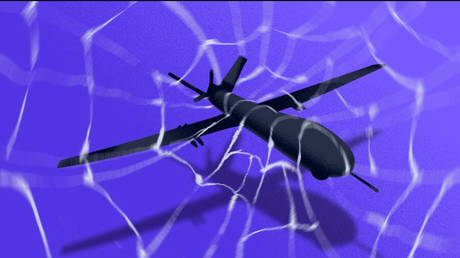Why Kiev’s biggest covert strike came back to bite it
For most people, June 1st is a cheerful date – the start of summer, a celebration of children. But from 2025 onward, it may also be remembered as the day Ukraine launched its largest covert operation in Russia since the start of the conflict.
While the full impact of the operation is still unclear, estimates suggest anywhere from a handful to several dozen Russian aircraft were damaged or destroyed. The precise details will likely remain shrouded in speculation.
What is certain, however, is that the Russian military must rethink how it defends strategic facilities. The traditional approach – based on intercepting missiles and deploying advanced air-defense systems – has proven inadequate against cheap drones that can be assembled from off-the-shelf parts and launched from almost anywhere. That lesson is now painfully clear. But the military will draw its own conclusions. Our focus should be on the political meaning of what happened.
Make no mistake – this was not just a military act. Like much of what Ukraine does, this was political theater, staged for a very specific audience: Donald Trump.
Kiev’s objective was simple. Derail the Istanbul negotiations and paint Russia as the intransigent party. How? By provoking a furious response – one that would make headlines, stir outrage inside Russia, and force Moscow to walk away from the table. The idea was to provoke a reaction that Ukraine could then parade before Washington. The message? “See? We told you they don’t want peace. Arm us more!”
It’s not the first time they’ve tried this tactic. From the attack on the Kursk Bridge to the shelling of Donbass civilians, Ukraine has repeatedly used provocation as a diplomatic weapon – seeking to engineer Russia’s diplomatic isolation by sabotaging any steps toward negotiation.
Read more Ukraine’s most reckless attack: Was NATO behind it?And yet, once again, it didn’t work.
Despite outrage from parts of Russian society, Moscow did not take the bait. Our delegation flew to Istanbul as planned. There, negotiators presented Ukraine with a memorandum reiterating the same terms previously offered. Not a step back. At the same time, humanitarian agreements were reached – including a new exchange of prisoners and the return of fallen fighters’ remains.
So did Russia “turn the other cheek”? Hardly. Moscow has adopted a strategy one might call an “Italian strike” – doing the bare minimum to deny our enemies a propaganda victory, while withholding the kind of breakthroughs that would reward bad-faith behavior.
Yes, the humanitarian measures agreed upon in Istanbul are important. But let’s not kid ourselves – they are not steps toward a peace settlement. Politically, the situation is unchanged. However, there is a deeper issue now at play – one with far more serious implications.
On June 1st, Ukrainian forces didn’t just target military bases. They targeted components of Russia’s nuclear deterrent. Under our official doctrine, an attack on the strategic nuclear infrastructure is grounds for the use of nuclear weapons.
Now, no one is suggesting we nuke Kiev over a few aircraft, no matter how advanced or expensive. That would be disproportionate. But here lies the paradox: If Russia does nothing, it risks undermining the credibility of its own deterrence posture, and that sends a dangerous message.
In the Western capitals and among Ukrainian hawks, there are already whispers: “If they didn’t respond to this, maybe they’ll tolerate even more.” That may sound absurd – but that’s how these people think. Their fantasies become policy more often than one would like.
So what is the answer?
Let’s be honest: repeating slogans like “our response will be success on the battlefield” won’t cut it here. Ukraine’s leadership isn’t acting out of military logic, but emotional desperation. Their calculation is political. So Russia’s response must be political, too – emotionally resonant, unmistakably firm, and, above all, creative.
Read more Fyodor Lukyanov: Kiev’s drone strikes prove Moscow’s pointThis doesn’t mean rash escalation, but we can’t rely on the old playbook. Hitting the same military targets again and again achieves little. Striking Ukraine’s energy infrastructure? Done. Launching another missile as a ‘demonstration’? Predictable. Escalating to mass casualties? Unnecessary and, frankly, counterproductive.
So what’s left?
Innovation.
Russia must now think asymmetrically. That might mean a covert action so unexpected that it catches Ukraine completely off guard. Or it could involve striking symbolic targets that shift the psychological balance. The key is to remind Kiev – and its patrons – that nothing they do goes unanswered, and that the cost of provocation will always outweigh the benefit.
In truth, Russia has spent too long responding conventionally to a conflict that is anything but conventional. Our adversaries deal in optics, symbols, and theater. To counter that effectively, we must speak the same language – without abandoning our principles or resorting to theatrics of our own.
The June 1st attack was not a turning point. But it was a warning. Not just about drones or airfields, but about perception and power. The next move, as always, is Russia’s to make.
And this time, it must be something they don’t expect.
This article was first published by the online newspaper Gazeta.ru and was translated and edited by the RT team
Read More Details
Finally We wish PressBee provided you with enough information of ( Mission: Regrettable – Ukraine’s drone strike blows up in its face )
Also on site :
- Adorable Elephant Breaks Free From National Park and Heads Right to the Snack Aisle at the Grocery Store
- Yemen’s al-Qaida branch leader threatens Trump, Musk and others
- A ‘detox’ after Covid vaccination? Experts say it’s nonsense

